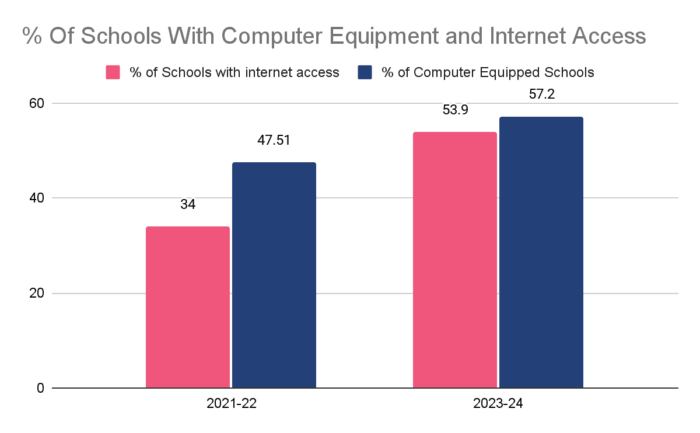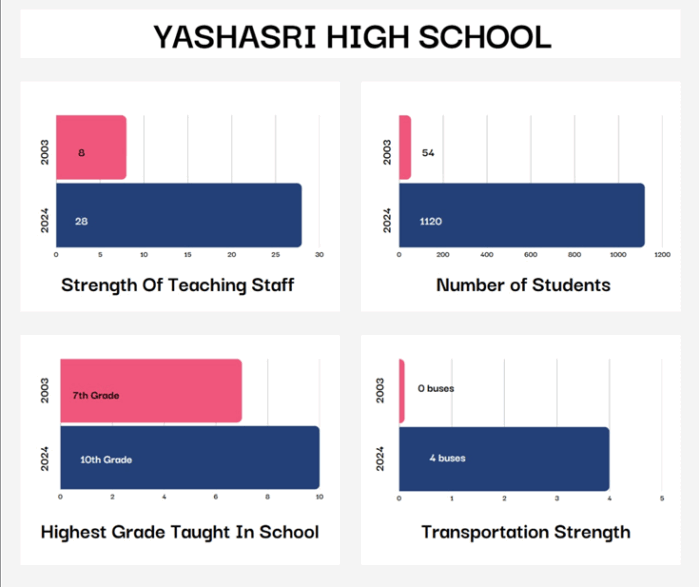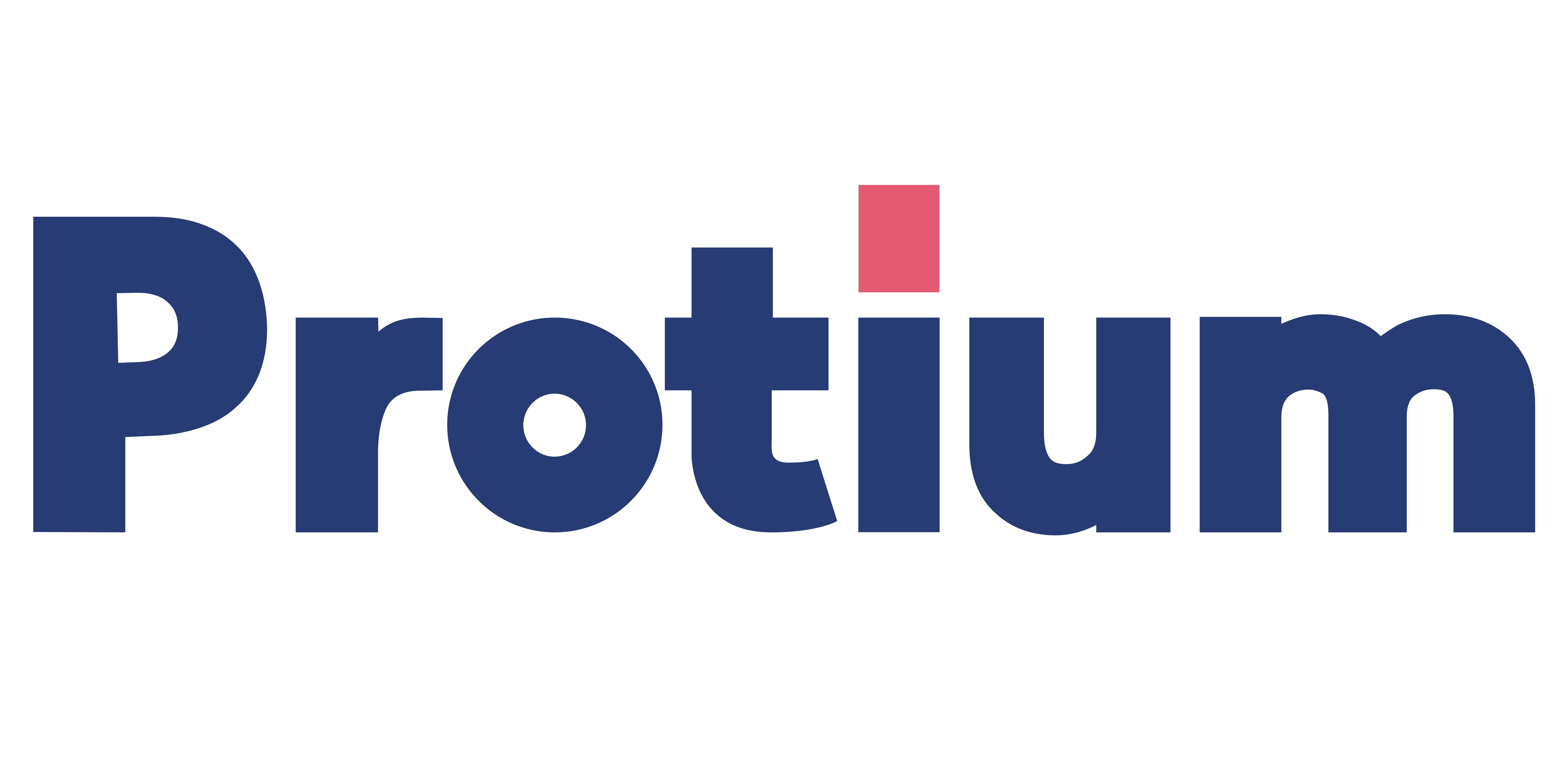What Makes An Indian School or College Future-Ready?
Here are 5 Pillars of Modern Education Infrastructure That Educational Institutions Can Consider
- India’s 1.46 million schools and 50,734 colleges are evolving with tech-powered classrooms, skill-based learning, stronger industry collaboration, etc.
- Cyberattacks on these educational institutions average 8,195 per week, making cybersecurity and safety compliance urgent priorities.
- Additionally, merely 45% of Indian graduates are job-ready, highlighting the need for industry-aligned curriculum, real-world training, and skill-based education.
- While only 26.77% of educators are trained in modern tech-savvy teaching methods, highlighting the necessity of faculty upskilling.
- To bridge this gap, educational institutions must opt for financing solutions that target their unique needs.
In 2025, 1.46 million Indian schools and 50,734 colleges are evolving, driven by reforms like the National Education Policy (NEP)1, increased collaboration between industry and academia, and adoption of new-age technologies. This marks a shift towards Education 5.0 — a future-focused learning model that emphasizes human-centric, technology-enabled, and purpose-driven education. This development rests on five main pillars of modern education infrastructure:
Pillar No. 1: Technology Adoption – The Backbone of Future-Ready Learning

Source: Brickswork Research- Education Industry in India (June 2024)
While the evolving education system necessitates a rapid adoption of technology, survey findings show that in 2023-24, computer-equipped schools stood at just 57.2% and those with internet access were just 53.9%. Besides this technological gap, a nationwide survey from 2021-22 shows that out of 2.4 lakh secondary and senior secondary schools surveyed, over 75% do not have fully equipped science labs for classes 11 and 12. This number drops further in states like Karnataka (6%), Andhra Pradesh (13%), Assam (4%), and West Bengal (6%).
To bridge this gap in infrastructure, it is necessary for educational institutions to embrace an overall improvement that targets:
- Technology: Improvements like computer labs, smart boards, audio-visual aids, tools for online learning modules, and high-speed internet connection to accommodate.
- Tech for Daily Operations: Enhancing administrative efficiency with technology by implementing tech solutions for faculty management, tools for managing admin work like fee records and inventory tracking, and digital systems for tracking equipment like lab instruments, sports materials, and medical kits to ensure that these resources are always in optimal condition.
Pillar No 2: Safety Compliance – Ensuring a Secure Learning Environment
The increasing digitization of education necessitates both physical and cybersecurity measures.
- Physical Safety Measures
Institutions must invest in essential safety measures such as fire safety systems, surveillance cameras, and access control mechanisms. Additionally, they should also align their measures with the advancements in health and hygiene infrastructure, including air filtration and sanitation systems, to ensure all safety measures comply with the necessary standards.
- Cybersecurity Measures
With the rise of online learning, institutions must implement robust cybersecurity protocols—including firewalls, encrypted networks, regular software updates, and secure login systems—to protect sensitive student data and prevent cyber threats. Regular audits, deploying anti-virus software, using malware, staff training, protecting servers with strong access controls, and adherence to data protection laws are equally essential to maintain a safe digital learning environment.
For instance, Indian educational institutions experience an average of 8,195 cyberattacks per week2, more than double the global average. They must adopt robust measures and cybersecurity training programs for faculty and students to mitigate risks related to data breaches and unauthorized access.
Pillar No 3: Inclusive Classrooms – Education for All
In today’s diverse and dynamic learning environments, students come from a wide range of physical, cognitive, linguistic, and socio-economic backgrounds. Ensuring that each of them has equal access to quality education requires a thoughtful integration of inclusive technologies, barrier-free design, and adaptive learning tools that accommodate the needs of physically challenged students as well. NEP 2020 underscores inclusivity as one of the four key focus areas of the five-year action plan that forms the foundation for achieving India Vision 2047 in the education sector. The policy envisions an academic ecosystem where every student—regardless of gender, ability, language, or socio-economic status—can thrive and participate fully in the learning process.
It calls upon institutions to proactively implement structural and pedagogical changes—from building accessible infrastructure and using assistive technologies to promoting gender equity and supporting students from socio-economically disadvantaged groups (SEDGs). This not only aligns with national development goals but also ensures compliance with emerging policy mandates.
Here’s how Educational Institutions Can Build Inclusive Classrooms:
- Infrastructure Enhancements: Schools and colleges can begin by ensuring physical accessibility—constructing ramps, installing elevators, widening doorways and hallways, and building accessible restrooms.
- Assistive Technologies: Incorporating tools such as speech-to-text converters, screen readers, Braille displays, interactive whiteboards, and smart assistive software to enable students with visual, hearing, or learning disabilities to actively participate.
- Digital Accessibility & Virtual Labs: Speech assistance platforms or AI-based virtual labs can be integrated into the curriculum, ensuring remote learning is also inclusive. These technologies also serve rural or economically disadvantaged students who cannot access physical labs.
- Training and Sensitization: Faculty and staff must be trained regularly to handle inclusive classrooms. Workshops on using assistive tech, understanding neurodiversity, and fostering inclusive communication are essential. NCERT and CBSE have rolled out such training modules, but private institutions can go further by customizing training to their student demographic.
- Language and Communication Tools: Hiring sign language interpreters, offering multilingual course material, and using visual learning aids can improve comprehension for students from diverse linguistic or communication backgrounds.
- Safe and Inclusive Campus Navigation: Implementing tactile maps, audio-guided navigation apps, and color-coded signage improves independence and confidence for differently-abled students.
Pillar No 4: Industry-Ready Curriculum – Designing Education for the Future Job Market
Students must be equipped with practical skills aligned with the evolving demands of the future job market. To achieve this, educational institutions must prioritize an industry-ready curriculum that seamlessly bridges the gap between academic learning and real-world employability. However, India ranks 25th on the QS World Future Skills Index, a metric that evaluates a country’s preparedness to meet the ever-evolving global job market demands. Also:
- Only 45%3 of Indian graduates possess the skills necessary for the job market
- Only 16% of companies believe that graduates are truly industry-ready from day one, in stark contrast to the 70% of academic institutions that hold this view.4
This highlights the abject need for educational institutions to take the following approach:
- Adapt the Curriculum to Industry Needs – Programs that offer college and university students real-world learning experiences and training in skills directly applicable in today’s workforce. Such programs should reflect current industry trends like basic and advanced computer skills, AI-driven methodologies in different fields, data management skills, frontline job skills, and others.
- Industry Partnerships for Real-World Exposure – Collaboration with industries to offer internships, live projects, and mentorship opportunities for students to gain hands-on experience and develop a future-ready skill set.
The importance of such upgrades in curriculum and real-world exposure is also emphasised by the introduction of the New Education Policy (NEP) that outlines the strategic five 5-Year Plans to achieve India Vision 20475.
| Focus | Action | Aim |
| Quality Education | Address faculty recruitment and development issues Enhance policies on technology in education Increase adoption of online courses Focus on academic flexibility and multidisciplinarity | Resolve faculty shortage through quality PhD student development Modernize educational delivery Enable interdisciplinary learning and flexibility in top-tier institutions |
| Industry Alignment | Increase industry investment in higher education Strengthen industry-institute collaborations Expand apprenticeship programs | Improve graduate employability Align education with industry needs and skills |
| Research and Innovation | Increase government expenditure on R&D Focus on quality research output Improve R&D funding at institutions | Enhance research quality and quantity Drive innovation in education, especially in top-ranked universities |
| Inclusivity | Promote gender diversity in leadership roles and inclusivity measures for all Increase focus on assisting students with disabilities through infrastructure and technologies | Ensure equal representation and opportunities for all student groups Create an inclusive educational environment through infrastructure and assistive technologies |
To align the schools and colleges with this vision, infrastructure changes like high-speed internet, industry-standard training equipment, research labs and incubation hubs, assistive technologies in the campus, and other changes that help classroom environments mimic industry settings are needed.
Pillar No 5: Faculty Upskilling – Empowering Educators for the Future
The shifting educational trends require educators to stay ahead of the curve with training in digital tools, AI-based educational platforms, and modern pedagogical strategies. However, only 26.77%6 teachers across different levels of education in India have received training in computer-based instruction, indicating a considerable need for upskilling in digital literacy and modern teaching tools.
To bridge the gap, the National Education Policy (NEP) 2020 recommends that teachers undertake at least 50 hours of Continuous Professional Development (CPD)7 annually to remain effective. For this, the training programs will need to focus on two main areas-
- Preparing Faculty for Tech Integration
This includes upskilling educators to work with virtual labs, conduct online evaluations, and use digital resources effectively.
- Funding Faculty Development Programs
Institutes can also invest in professional development programs to help faculty members possess the necessary skills to thrive in a tech-integrated environment. These programs can range from workshops on AI and digital platforms to training on innovative teaching methodologies. Plus, access to the latest subject-related papers and resources should be made available for continuous subject updates.
While the schools and colleges of India strive to keep up with the advancements in the sector, financing the procurement and maintenance of upgrades is where the problem arises for many institutes. This is where the need for trusted external financial assistance comes into the picture.
Financing a Future-Ready Institution: Beyond Just Buildings
Institutions looking to align with the five building blocks of a modern educational ecosystem need financial assistance to invest in technology, safety, basic infrastructure, and faculty development, exactly like Yashasri High School.
Founded in 2003, Yashasri High School began as a small educational institution with just 54 students taught by Mr Aneel Kumar and eight other teachers. Over the years, it faced significant challenges in expanding its offerings and infrastructure. Later, with the support of a curated finance solution like Protium’s Education Institutional (EDI) loans, the school was able to overcome these hurdles and achieve remarkable growth.
Here’s how Yashasri High School was transformed:

- Student Growth: The school expanded its student enrollment from 54 to 1,120 students in FY2024, a substantial growth of approximately 1977% since its inception.
- Grade Expansion: Initially offering classes up to 7th standard, the school added new grades, extending up to 10th standard.
- Staff Expansion: The number of teaching staff grew from 8 to 28 in FY2024, a growth of around 250% since establishment.
- Transportation: Four buses were procured for student transportation.
With targeted funding through tailored financing solutions like the Educational Institutional (EDI) loans, educational institutions can accelerate their transformation, ensuring they remain competitive and equipped to meet the demands of the evolving education landscape.

